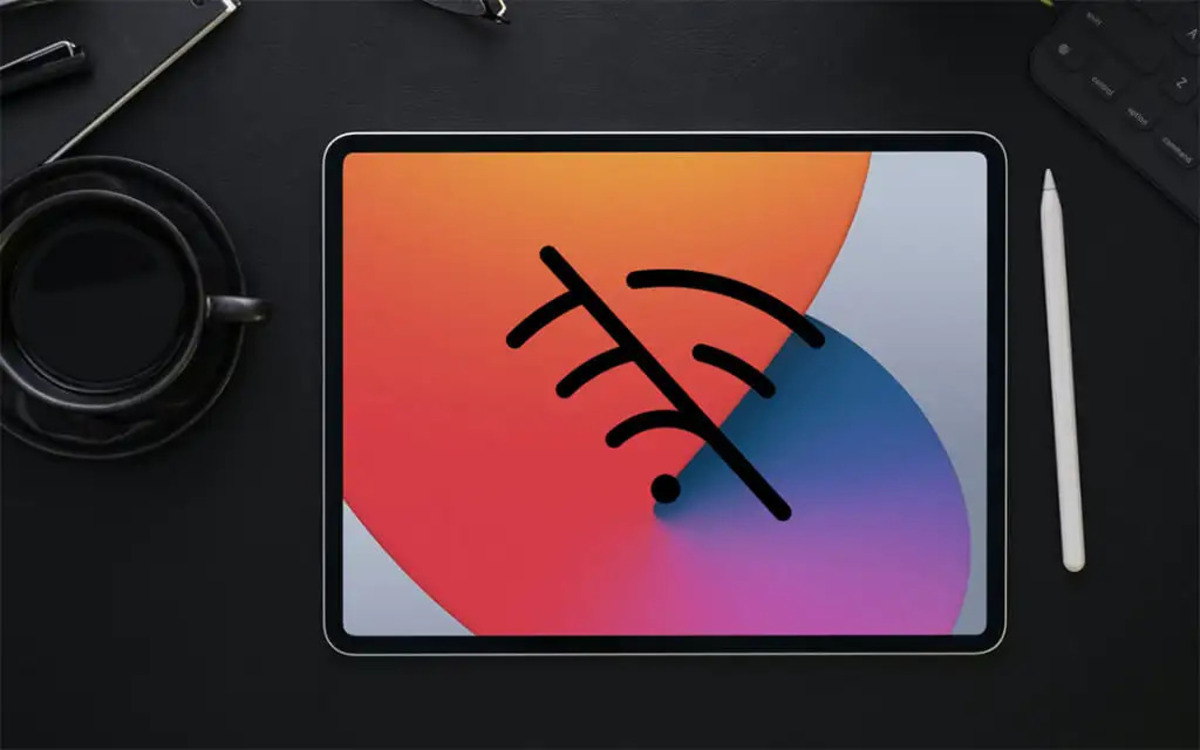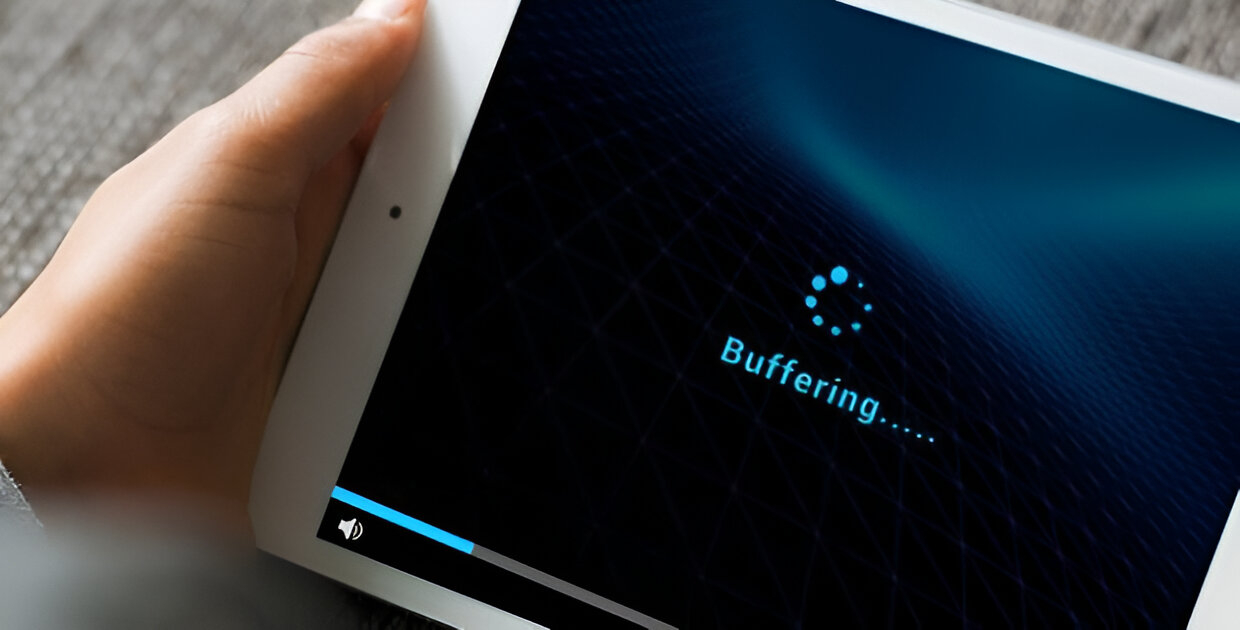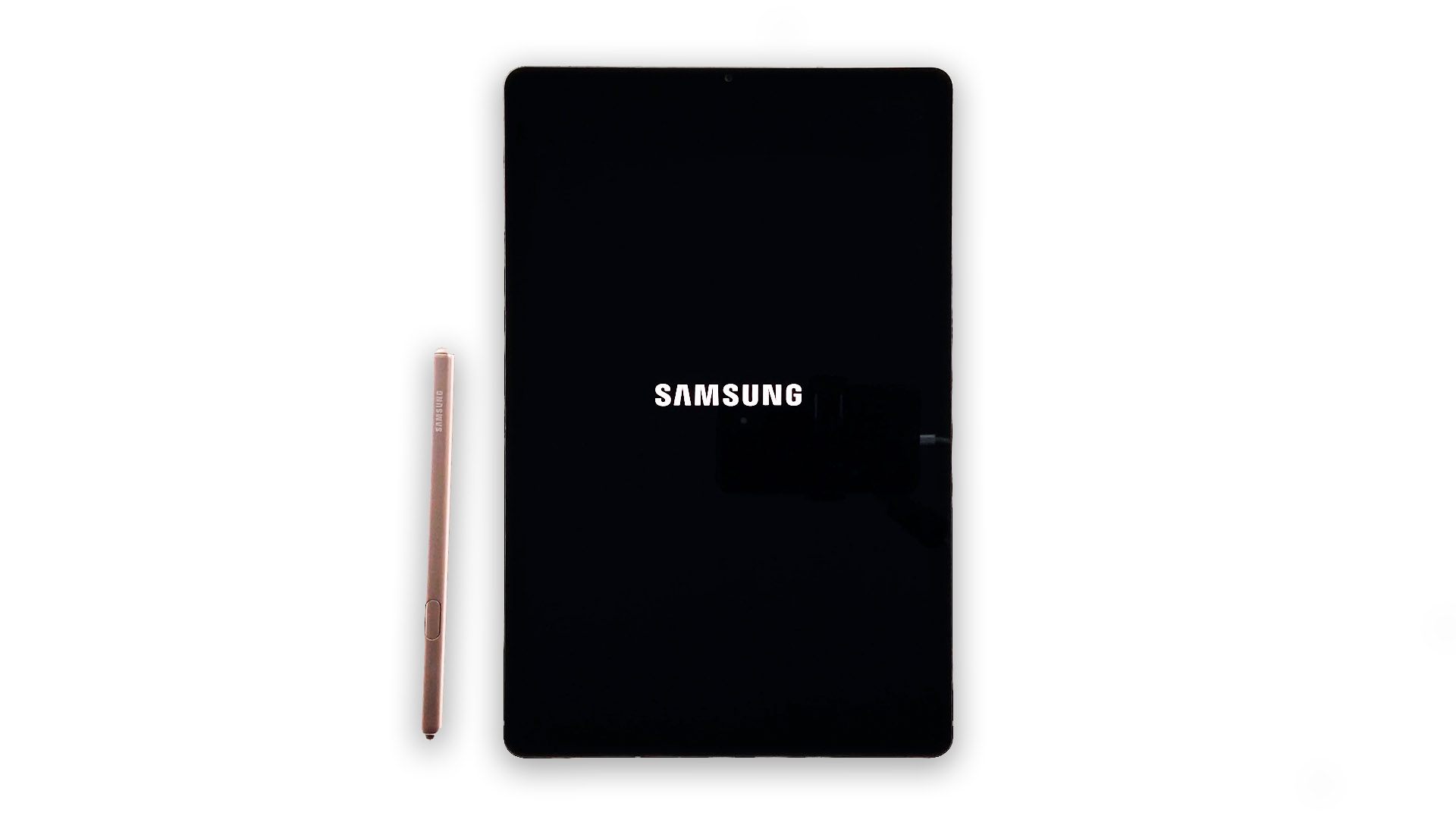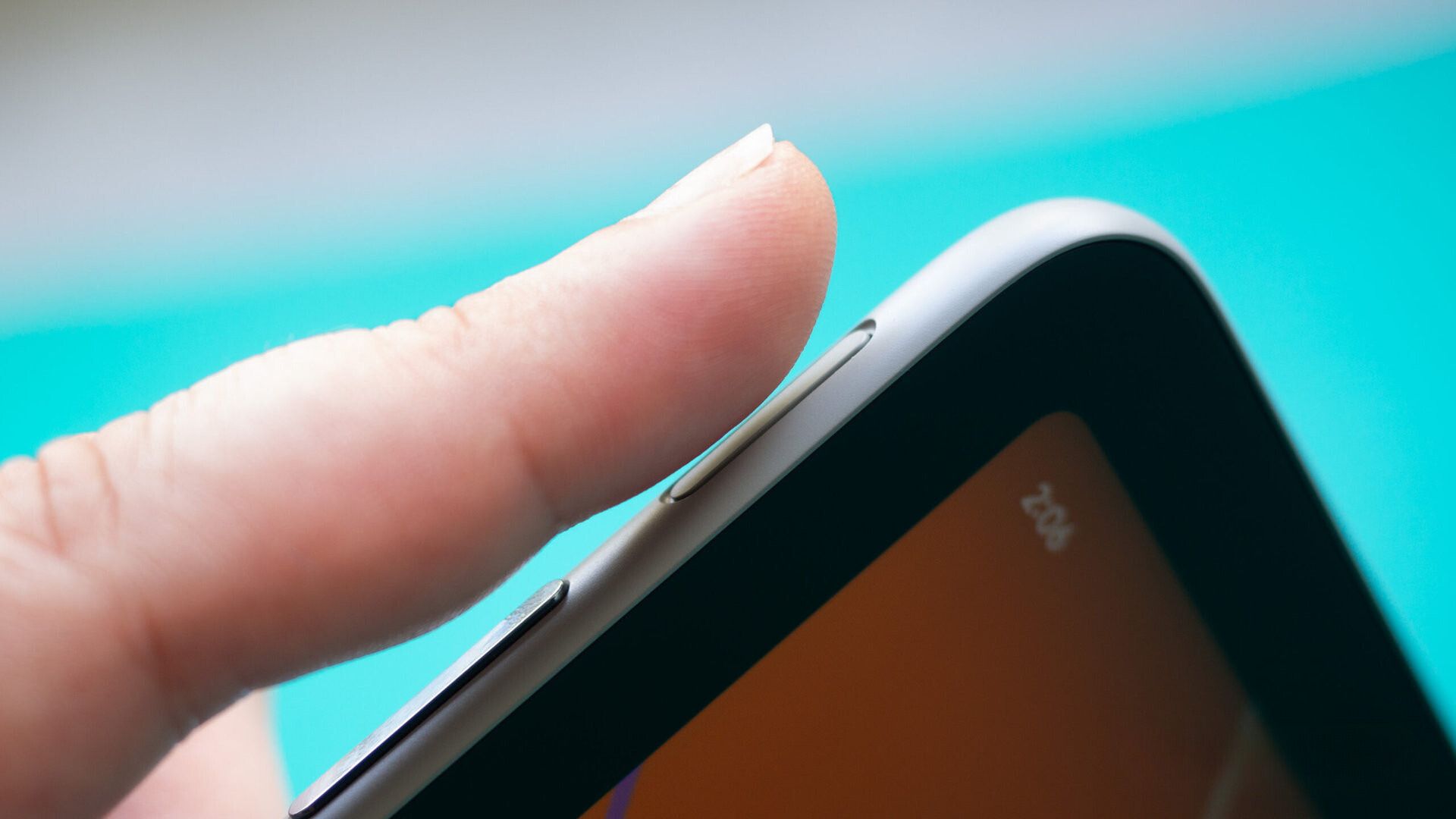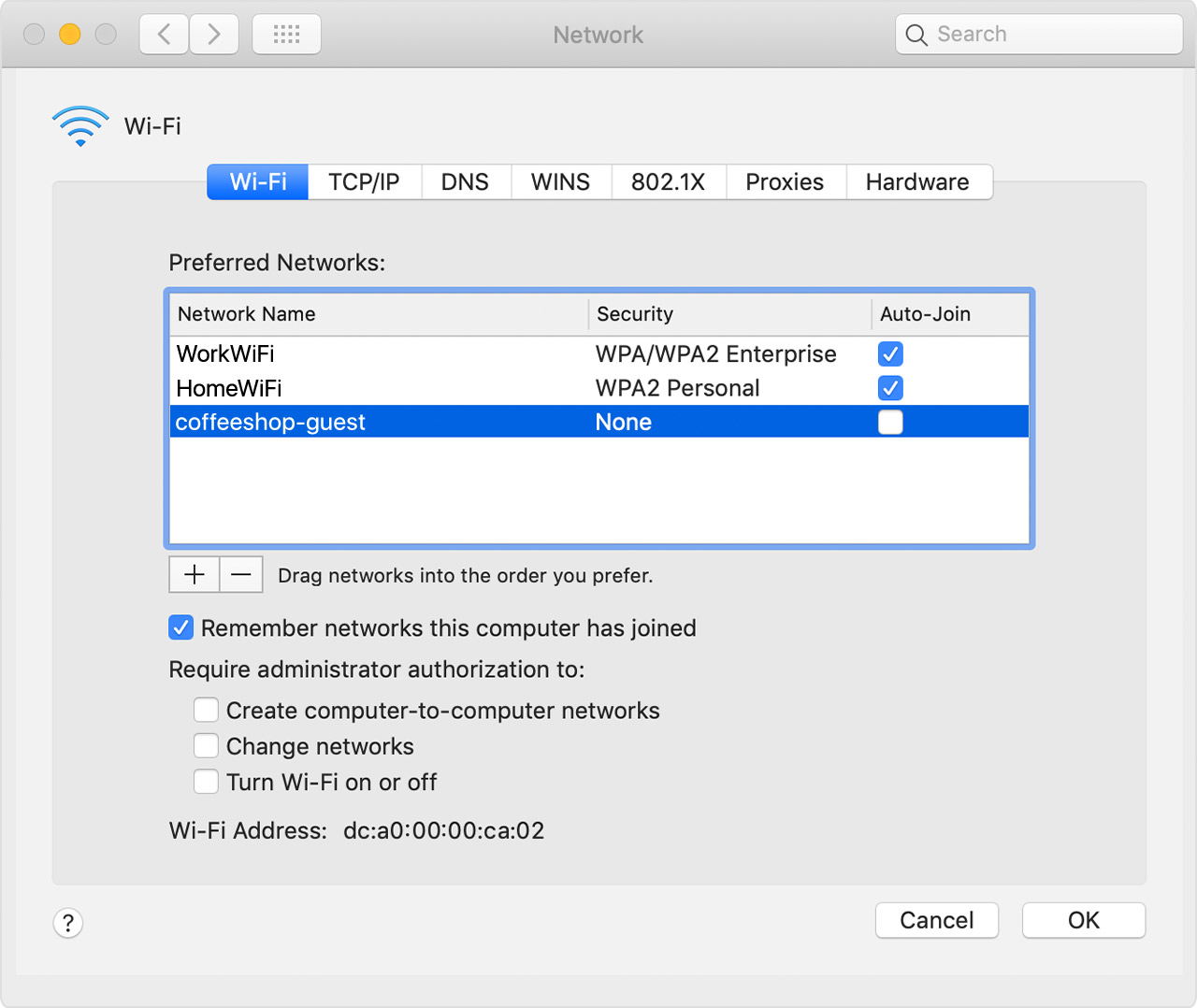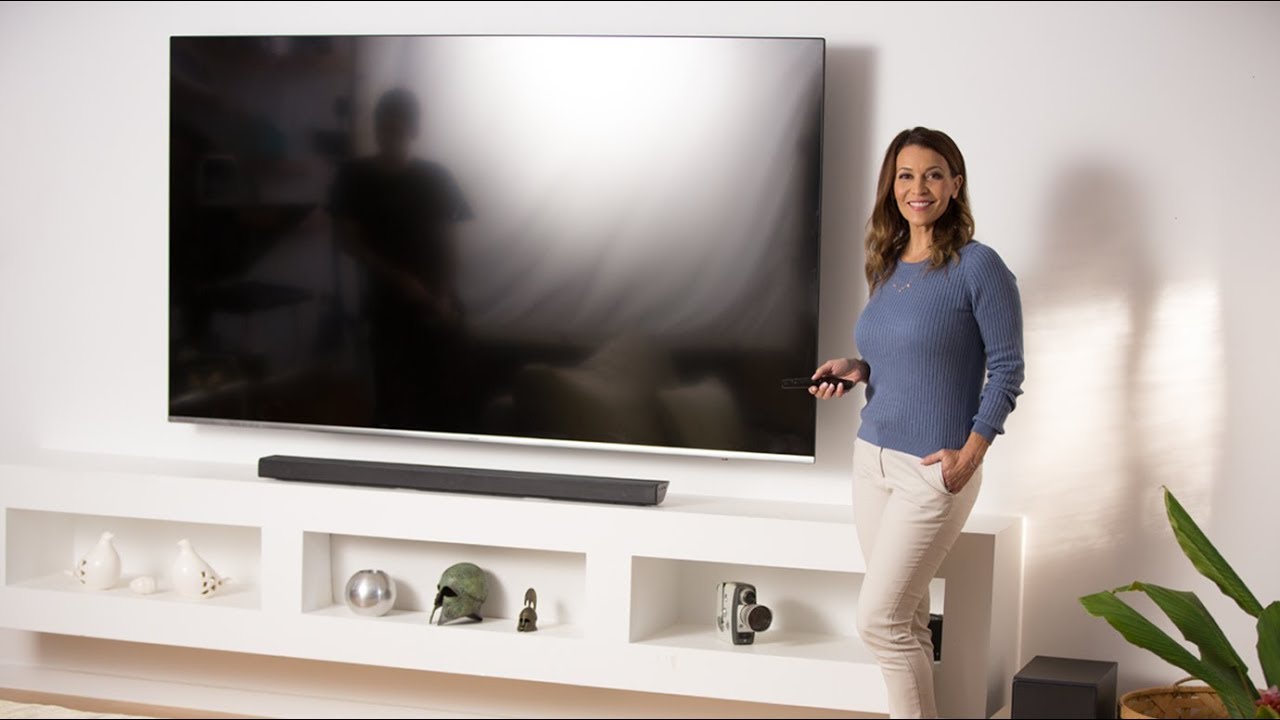Introduction
Having trouble connecting your tablet to Wi-Fi? It can be a frustrating experience, especially when you rely on a stable internet connection for work, entertainment, and communication. Whether you’re using a tablet for browsing, streaming, or accessing online services, a reliable Wi-Fi connection is crucial.
Wi-Fi connection issues can occur for various reasons, and troubleshooting them can be a bit overwhelming, especially if you’re not familiar with the technical aspects. However, understanding the common reasons behind these issues can help you diagnose and resolve the problem more efficiently.
In this article, we will explore some of the common reasons why your tablet might not be connecting to Wi-Fi. We’ll also provide troubleshooting steps to help you overcome these issues and get your tablet connected again, ensuring a smooth browsing and online experience.
Remember that each tablet model and Wi-Fi network setup can have unique characteristics, so these troubleshooting steps might not be universally applicable. However, they serve as a good starting point in your quest to resolve Wi-Fi connectivity problems.
Common Reasons for Wi-Fi Connection Issues
When your tablet fails to connect to Wi-Fi, there are several potential culprits that you should consider. Understanding these common reasons can help you identify and address the issue more effectively. Let’s take a look at some of the most frequent reasons why your tablet might be experiencing Wi-Fi connection problems.
- Incorrect Wi-Fi Password: One of the most common reasons for Wi-Fi connection issues is entering the wrong password. Make sure you double-check the password you’ve entered on your tablet to ensure it matches the one set for your Wi-Fi network.
- Wi-Fi Network Compatibility: Some older tablets may not be compatible with the latest Wi-Fi network standards. If your tablet is unable to connect to a specific Wi-Fi network, check if it supports the network’s frequency and security protocols.
- Limited Wi-Fi Range: Wi-Fi signals have limited range, especially in larger homes or office spaces. If you’re far away from the router, your tablet may struggle to maintain a stable connection. Try moving closer to the router to see if it improves the connection.
- Network Router Issues: The problem might not lie with your tablet but with the router itself. Check if other devices are able to connect to the Wi-Fi network. If not, there might be an issue with the router that needs to be addressed.
- Software or Firmware Updates: Outdated software or firmware on your tablet can also cause Wi-Fi connection issues. Ensure that your tablet’s operating system and firmware are up to date to avoid any compatibility problems.
These are just a few of the most common reasons why your tablet may be struggling to connect to Wi-Fi. By identifying the potential cause, you can move on to troubleshooting steps to resolve the issue. In the next section, we will discuss some practical tips to help you troubleshoot and fix your tablet’s Wi-Fi connection problems.
Incorrect Wi-Fi Password
One of the most common reasons for Wi-Fi connection issues is entering the wrong password. Even a small typing mistake can prevent your tablet from connecting to the Wi-Fi network. If you’re getting an “Incorrect Password” error message or your tablet is unable to connect, here’s what you can do:
First, double-check the Wi-Fi password you’ve entered on your tablet. Make sure it matches the password set for your Wi-Fi network. It’s essential to be careful with uppercase and lowercase letters, special characters, and numbers. If you’re unsure about the password, you can find it on your router’s label or in the settings of the router administration page.
If you’ve recently changed the Wi-Fi password, make sure to update it on your tablet as well. If you’re uncertain about the correct password, try connecting another device, like a laptop or smartphone, to the Wi-Fi network using the same password. This can help confirm whether the issue lies with the password or with the tablet itself.
In some cases, network administrators may use complex or customized passwords that include unique characters or long phrases. Pay attention to any special requirements or instructions when entering the password for your Wi-Fi network. Some tablets also have the option to show the password as you type, which can help you identify any errors more easily.
Remember that Wi-Fi passwords are case-sensitive, so “password” is different from “Password.” Pay close attention to the capitalization while entering the password. If you’re still unable to connect to the Wi-Fi network despite entering the correct password, move on to the further troubleshooting steps outlined in this article.
Wi-Fi Network Compatibility
Another common reason for Wi-Fi connection issues on your tablet is network compatibility. Older tablets may not support the latest Wi-Fi network standards or frequencies, causing connection problems. Here’s what you can do to check for Wi-Fi network compatibility:
First, determine the Wi-Fi network standard and frequency being used by your router. Most modern routers support the 802.11n or 802.11ac standard, offering faster speeds and better stability. However, older tablets might only support the older 802.11a, 802.11b, or 802.11g standards.
Check your tablet’s specifications or user manual to find out which Wi-Fi standards it supports. If your tablet is not compatible with the Wi-Fi network standard being used by your router, you may need to consider upgrading your tablet or using an alternative Wi-Fi network.
Additionally, check for the Wi-Fi network frequency being used (2.4GHz or 5GHz). Some tablets may only support one frequency, while others can connect to both. If your tablet doesn’t support the frequency used by your Wi-Fi network, you may experience connection issues or be unable to connect at all.
To resolve this issue, you can try adjusting the Wi-Fi network frequency settings on your router to match your tablet’s capabilities. Most routers have the option to broadcast on both 2.4GHz and 5GHz frequencies simultaneously or independently. By enabling both frequencies, you can allow your tablet to connect using the compatible frequency.
If adjusting the router settings isn’t an option, consider using a dual-band external Wi-Fi adapter that supports the frequency your tablet requires. These adapters can be easily plugged into the USB port of your tablet and provide compatibility with various Wi-Fi network frequencies.
Keep in mind that the compatibility issue may not lie with your tablet alone. The Wi-Fi network itself might have specific restrictions or incompatibility issues with certain devices. If you’re unable to connect to a specific Wi-Fi network despite having a compatible tablet, try connecting to a different network to determine if the problem is network-specific or related to your tablet.
Limited Wi-Fi Range
Limited Wi-Fi range can be another significant factor contributing to connectivity issues on your tablet. Wi-Fi signals have a limited range, and if you are too far away from the router, your tablet may struggle to establish and maintain a stable connection. Here are some steps you can take to address this problem:
First, check the signal strength on your tablet. Typically, tablets show the Wi-Fi signal strength in the form of bars or a signal meter. If the signal strength is low or nonexistent, it indicates that you are out of range. Adjust your position and move closer to the Wi-Fi router to improve the signal.
In some cases, the layout of your home or office can cause Wi-Fi signal obstruction. Walls, floors, and other physical objects can impede the Wi-Fi signal and limit its range. In such situations, try to position yourself in areas that are closer to the router and have fewer obstacles in the signal path.
If moving closer to the router doesn’t resolve the issue, consider using Wi-Fi range extenders or repeaters. These devices amplify the Wi-Fi signal and extend its range, allowing you to access the network from more distant locations in your home or office. Place the range extender strategically between your tablet and the router to maximize signal strength.
Additionally, you can try repositioning your router to a more central location within your home or office. This can help distribute the Wi-Fi signal more evenly, minimizing the impact of physical obstructions and improving the range for all connected devices, including your tablet.
It’s also worth noting that some routers have adjustable antennas. Experiment with positioning the antennas to optimize the Wi-Fi signal strength and range. Vertical placement or angling the antennas towards where your tablet is typically used can sometimes enhance the signal reception.
Lastly, if you frequently face range limitations and your tablet supports it, consider upgrading to a Wi-Fi network using the 5GHz frequency band. The 5GHz band typically offers less interference and better performance over longer distances, although it may have a slightly shorter range compared to the 2.4GHz band.
By addressing range limitations, you can improve the Wi-Fi signal reception on your tablet and enjoy a more reliable connection wherever you are within the coverage area.
Network Router Issues
Sometimes, the problem with connecting your tablet to Wi-Fi lies not with the tablet itself, but with the network router. Network router issues can cause connectivity problems for all devices, including your tablet. Here are some steps you can take to troubleshoot router-related issues:
First, check if other devices in your home or office are also experiencing Wi-Fi connection problems. If multiple devices are unable to connect or experiencing inconsistent connectivity, it’s a strong indication that the router is the culprit. In such cases, restart the router by unplugging it from the power source, waiting for a few seconds, and then plugging it back in. This simple step can often resolve temporary router issues.
If the router restart doesn’t help, access the router’s administration page through a web browser. The router’s user manual usually provides instructions or a default IP address to access these settings. From the management interface, check if the Wi-Fi network settings are properly configured. Ensure that the Wi-Fi network is enabled and broadcasting, and that the SSID (network name) and password are correctly set.
It’s also a good idea to update the router’s firmware if newer versions are available. Router manufacturers often release firmware updates to address various issues and improve stability. Check the manufacturer’s website for firmware updates specific to your router model, and follow the instructions provided to update it if needed.
Another possible issue can be interference from other devices. Common culprits include cordless phones, microwave ovens, and other Wi-Fi networks in close proximity. Try moving your router away from these devices and other electronic appliances that can cause signal interference. Additionally, changing the Wi-Fi channel on your router can help mitigate interference from other networks operating on the same frequency.
In more severe cases, a factory reset of your router might be necessary. This should be your last resort, as it will remove all custom settings and configurations. Refer to the router’s documentation for instructions on how to perform a factory reset.
If none of the above steps alleviate the router-related issues and your tablet still cannot connect to Wi-Fi, consider contacting the router manufacturer’s support or your internet service provider for further assistance. They can provide additional troubleshooting steps specific to your router model or help identify if there are any underlying issues with your internet connection.
Software or Firmware Updates
Outdated software or firmware on your tablet can also be a cause of Wi-Fi connection issues. Software and firmware updates often include bug fixes, security enhancements, and compatibility improvements that can address connectivity problems. Here’s what you can do to ensure your tablet’s software and firmware are up to date:
Check for available software updates on your tablet. Depending on the operating system, you can typically find the update option in the “Settings” menu. Look for the “Software Update” or “System Update” option and follow the prompts to check for any available updates. If updates are available, download and install them.
Regularly updating your tablet’s software can fix known issues and improve overall system performance, including Wi-Fi connectivity. Developers often release updates to address specific issues identified after the initial release, so keeping your tablet up to date can help resolve Wi-Fi connection problems.
In addition to software updates, ensure that your tablet’s firmware is also up to date. Firmware updates are released by the tablet manufacturer and can provide enhancements to device functionality and performance. Check the manufacturer’s website or look for the firmware update option in your tablet’s settings to see if any new updates are available. Follow the instructions provided to install the firmware update, if necessary.
Before performing any software or firmware updates, it’s advisable to back up your tablet’s data to prevent any potential data loss in case something goes wrong during the update process. Also, make sure your tablet is connected to a reliable power source to avoid any interruptions during the update, as these processes can sometimes take a significant amount of time.
After updating the software and firmware, restart your tablet and attempt to connect to Wi-Fi again. In many instances, resolving Wi-Fi connectivity issues can be as simple as ensuring your tablet has the latest software and firmware updates installed.
If your tablet still fails to connect to Wi-Fi after updating the software and firmware, consider resetting your network settings. This option can be found in the “Network” or “Wi-Fi” settings of your tablet and will reset all network-related settings to their default configuration. Keep in mind that this will remove any saved Wi-Fi networks, so you will need to re-enter the Wi-Fi password for each network you want to connect to.
If the Wi-Fi connection problems persist after updating the software, firmware, and resetting network settings, further troubleshooting steps may be required. Consider consulting the tablet manufacturer’s support or professional IT assistance for advanced troubleshooting and potential hardware-related issues.
Troubleshooting Steps for Tablet Wi-Fi Issues
If your tablet is still experiencing Wi-Fi connection issues after considering common causes such as incorrect passwords, network compatibility, limited range, and router issues, there are several troubleshooting steps you can take. These steps can help diagnose and resolve the problem, allowing you to regain a stable Wi-Fi connection. Here are some troubleshooting steps to try:
1. Verify the Wi-Fi Password: Double-check the Wi-Fi password entered on your tablet. Ensure it matches the password set for your Wi-Fi network, including correct capitalization and any special characters or numbers. If in doubt, try connecting another device to the Wi-Fi network to confirm the correct password.
2. Check Wi-Fi Network Compatibility: Ensure your tablet is compatible with the Wi-Fi network’s standards and frequency. Some older tablets may not support the latest network standards or specific frequency bands. If your tablet is incompatible, consider using a dual-band external Wi-Fi adapter or connecting to a different network that is compatible.
3. Move Closer to the Wi-Fi Router: If you’re experiencing a weak or unstable Wi-Fi signal, try moving closer to the router. Physical obstructions and distance can affect signal strength and stability. By reducing the distance between your tablet and the router, you can improve the Wi-Fi connection quality.
4. Restart the Router and Tablet: Sometimes, temporary issues can be resolved by simply restarting both the router and your tablet. Unplug the router from the power source, wait for a few seconds, then plug it back in. Also, restart your tablet to clear any temporary software glitches that might be affecting the Wi-Fi connection.
5. Update Tablet Software or Firmware: Ensure your tablet’s software and firmware are up to date. Check for any available software updates in your tablet’s settings and install them. Similarly, check for firmware updates from the manufacturer and update accordingly. Outdated software or firmware can cause compatibility issues and affect Wi-Fi connectivity.
By following these troubleshooting steps, you can identify and address potential issues with your tablet’s Wi-Fi connection. However, if the problems persist, it’s advisable to consult the tablet manufacturer’s support or seek assistance from a professional IT service provider for further troubleshooting and potential hardware-related issues.
Verify the Wi-Fi Password
One of the most common reasons for Wi-Fi connection issues is entering an incorrect password. Even a small typo can prevent your tablet from connecting to the Wi-Fi network. If you are experiencing trouble connecting, follow these steps to verify the Wi-Fi password:
First, double-check the Wi-Fi password you entered on your tablet. Ensure that it matches the password set for your Wi-Fi network. Pay attention to uppercase and lowercase letters, special characters, and numbers. Note that Wi-Fi passwords are case-sensitive, meaning that “password” is different from “Password.”
If you recently changed the Wi-Fi password, make sure you update it on your tablet as well. Sometimes, devices can save old passwords and automatically try to connect using them, resulting in connection failures. Updating the password on your tablet ensures that it is using the correct credentials.
To confirm that you have the correct password, try connecting another device, such as a laptop or smartphone, to the Wi-Fi network using the same password. If other devices can connect successfully, it indicates that the issue lies with your tablet rather than the password itself.
If you are uncertain about the Wi-Fi password, you can usually find it on your router’s label. It might also be available in the settings of the router’s administration page, which can be accessed through a web browser by typing the router’s IP address.
For convenience, some tablets have the option to show the password as you type. This feature can be helpful in identifying any mistakes in the entered password. If your tablet offers this option, consider utilizing it to ensure accurate input.
Lastly, if you have exhausted all the above steps and are still unable to connect to the Wi-Fi network despite entering the correct password, it may be worth considering a factory reset of the router itself. However, proceed with caution as this will reset all settings on the router, including Wi-Fi configurations, and you will need to reconfigure it from scratch.
By verifying the Wi-Fi password and ensuring its accuracy, you can eliminate password-related issues as a potential cause for your tablet’s Wi-Fi connection problems. If the problem persists, it’s recommended to proceed to the next troubleshooting steps outlined in this article.
Check Wi-Fi Network Compatibility
Another common reason for Wi-Fi connection issues on your tablet is network compatibility. Tablets, especially older models, may not support the latest Wi-Fi network standards or frequencies, resulting in connection problems. Here’s what you can do to check the compatibility of your tablet with the Wi-Fi network:
Start by identifying the Wi-Fi network standard and frequency used by your router. Most routers nowadays support the 802.11n or 802.11ac standard, offering faster speeds and improved stability. However, older tablets may only support outdated standards like 802.11a, 802.11b, or 802.11g.
Check your tablet’s specifications or refer to the user manual to determine which Wi-Fi standards it supports. If your tablet is not compatible with the Wi-Fi network standard being used by your router, it may be time to consider upgrading your tablet or finding an alternative Wi-Fi network that your tablet can connect to.
In addition to the Wi-Fi network standard, you should also consider the frequency compatibility. Wi-Fi networks can operate on either the 2.4GHz or 5GHz frequency bands. Some tablets may only support one frequency, while others can connect to both. If your tablet doesn’t support the frequency used by your Wi-Fi network, it can lead to connection issues or prevent connectivity altogether.
To resolve this issue, you can try adjusting the Wi-Fi network frequency settings on your router to match your tablet’s capabilities. Most routers have the option to simultaneously or independently broadcast on both 2.4GHz and 5GHz frequencies. Enabling both frequencies allows your tablet to connect using the compatible frequency.
If adjusting the router’s settings is not possible, or if your tablet still can’t connect due to frequency incompatibility, you may consider using a dual-band external Wi-Fi adapter. These adapters can be easily plugged into your tablet’s USB port, providing compatibility with various Wi-Fi network frequencies and allowing you to connect to the network.
It’s important to note that incompatibility issues can sometimes arise from the Wi-Fi network itself. Some networks may have specific restrictions or incompatibilities with certain devices. If you’re unable to connect your tablet to a specific Wi-Fi network despite having a compatible tablet, try connecting to a different Wi-Fi network to determine if the issue is network-specific or related to your tablet.
By verifying the compatibility between your tablet and the Wi-Fi network, you can identify any limitations or incompatibilities that may be causing connectivity issues. This knowledge will help you troubleshoot and find suitable solutions to establish a stable Wi-Fi connection on your tablet.
Move Closer to the Wi-Fi Router
One of the main factors affecting Wi-Fi connectivity is the distance between your tablet and the Wi-Fi router. If you are experiencing weak or unstable Wi-Fi signals, moving closer to the router can significantly improve the connection. Here’s what you need to do:
Check the signal strength on your tablet. Most tablets display Wi-Fi signal strength using bars or a signal meter. If the signal strength is low or nonexistent, it indicates that you are too far away from the router. Moving closer to the router can help strengthen the signal and improve the connection quality.
The layout and structures of your home or office can obstruct Wi-Fi signals, causing reduced range. Walls, floors, and other physical objects can weaken and block the signal, leading to connectivity issues. To mitigate this, try to position yourself in areas that are closer to the router and have fewer obstacles between your tablet and the router.
Consider the location of the Wi-Fi router itself. If it is tucked away in a corner or hidden behind other objects, it may limit the signal coverage. Ensure that the router is placed in a central location within your home or office to allow for an optimal spread of Wi-Fi signals.
If moving closer to the router is not feasible or does not fully resolve the issue, you might consider using Wi-Fi range extenders or repeaters. These devices amplify the Wi-Fi signal and extend its range, allowing you to connect from more distant locations within your home or office. Place the range extender strategically between your tablet and the router to maximize the signal strength and achieve better connectivity.
It’s also worth noting that some routers have adjustable antennas. Experiment with the position and angle of the antennas to optimize the Wi-Fi signal strength and range. Vertical placement or angling the antennas toward the area where your tablet is predominantly used can sometimes enhance signal reception.
Lastly, if you frequently struggle with limited Wi-Fi range and your tablet supports it, consider upgrading to a Wi-Fi network that operates on the 5GHz frequency band. The 5GHz band typically offers less interference and better performance over longer distances, although it may have a slightly shorter range compared to the 2.4GHz band.
By addressing limited Wi-Fi range and ensuring a closer proximity to the router, you can significantly enhance the Wi-Fi signal reception on your tablet and enjoy a more stable and reliable connection, even when farther away from the router.
Restart the Router and Tablet
When experiencing Wi-Fi connection issues on your tablet, one of the simplest and most effective troubleshooting steps is to restart both the router and your tablet. This can help resolve temporary glitches or conflicts that may be causing connectivity problems. Follow these steps to restart the router and tablet:
Begin by unplugging the router from the power source. It’s important to completely disconnect the power to ensure a full restart. Wait for about 10-15 seconds before plugging it back into the power source. This will allow the router to fully power down and reset.
While the router is restarting, ensure that your tablet is disconnected from any Wi-Fi networks. Swipe down from the top of the screen to access the notification center and tap the Wi-Fi icon to turn off Wi-Fi. Alternatively, you can go to the Wi-Fi settings in your tablet’s settings menu and toggle the Wi-Fi switch off.
After waiting for the router to regain power, check that all the lights indicating the Wi-Fi status on the router are stable and normal. This signifies that the router has completed the restart process and is ready to establish connections.
Now, turn on the Wi-Fi feature on your tablet. Swipe down from the top of the screen to access the notification center again and tap on the Wi-Fi icon to enable Wi-Fi. Alternatively, go to the Wi-Fi settings and toggle the switch to the “On” position.
Your tablet will then scan for available Wi-Fi networks. Locate and select the desired network from the list. Enter the Wi-Fi password correctly, if prompted, and attempt to connect to the network. Hopefully, the restart process has resolved any temporary issues, and your tablet will now connect successfully to the Wi-Fi network.
Restarting both the router and tablet clears the memory and resets any connections or conflicts that might be hindering the Wi-Fi connection. It can also refresh the IP address assigned to your tablet, which sometimes helps resolve connectivity problems by establishing a new and stable connection.
If restarting the router and tablet does not solve the Wi-Fi connection issues, you may proceed to the next troubleshooting steps to further diagnose and address the problem.
Update Tablet Software or Firmware
Outdated software or firmware on your tablet can often be a cause of Wi-Fi connection issues. Software and firmware updates regularly include bug fixes, security enhancements, and compatibility improvements that can help address connectivity problems. Here’s what you can do to ensure your tablet’s software and firmware are up to date:
Start by checking for available software updates on your tablet. The exact method may vary depending on the operating system, but generally, you can find the update option in the “Settings” menu. Look for the “Software Update” or “System Update” section and follow the prompts to check for any available updates. If updates are available, download and install them.
Regularly updating your tablet’s software can resolve known issues and improve overall system performance, including Wi-Fi connectivity. Developers often release updates to address specific problems identified after the initial release, so keeping your tablet up to date can help resolve Wi-Fi connection problems.
Furthermore, ensure that your tablet’s firmware is also up to date. Firmware updates are usually released by the tablet manufacturer and can provide enhancements to device functionality and performance. Look for firmware updates on the manufacturer’s website or in the tablet’s settings. Follow the instructions provided to install the firmware update if one is available.
Before performing any software or firmware updates, it’s important to back up your tablet’s data to prevent any potential data loss in case something goes wrong during the update process. Also, make sure your tablet is connected to a reliable power source to prevent any interruptions during the update, as these processes can sometimes take a significant amount of time.
After updating the software and firmware, restart your tablet and attempt to connect to Wi-Fi again. In many instances, resolving Wi-Fi connectivity issues can be as simple as ensuring your tablet has the latest software and firmware updates installed.
If your tablet still fails to connect to Wi-Fi after updating the software, firmware, and restarting the device, consider resetting your network settings. This option can be found in the “Network” or “Wi-Fi” settings of your tablet and will reset all network-related settings to their default configuration. Keep in mind that this will remove any saved Wi-Fi networks, so you will need to re-enter the Wi-Fi password for each network you want to connect to.
By updating the tablet’s software and firmware, you can often resolve Wi-Fi connectivity issues related to outdated system components. It’s important to keep your tablet’s software up to date to ensure compatibility with the latest Wi-Fi protocols and to take advantage of any improvements or bug fixes that the updates may provide.
Conclusion
Wi-Fi connectivity issues can be frustrating, but they can often be resolved by addressing common causes and following troubleshooting steps. When your tablet fails to connect to Wi-Fi, it’s essential to check for potential problems such as an incorrect password, network compatibility, limited range, router issues, or outdated software/firmware. By understanding these factors, you can diagnose and resolve the issue more effectively.
Verifying the Wi-Fi password ensures that you have entered the correct credentials and eliminates password-related issues. Checking Wi-Fi network compatibility ensures that your tablet is capable of connecting to the specific network standard and frequency used by your router. Moving closer to the Wi-Fi router helps overcome limited range issues and strengthens the Wi-Fi signal reception.
If the problem lies with the router, restarting both the router and tablet can help resolve temporary glitches or conflicts. Updating the tablet’s software and firmware ensures compatibility with the latest Wi-Fi protocols, fixes known issues, and improves overall system performance. These troubleshooting steps can significantly improve your tablet’s Wi-Fi connection.
However, if the Wi-Fi issues persist after trying these troubleshooting steps, it’s advisable to seek further assistance from the tablet manufacturer’s support or consult with IT professionals. They can provide personalized guidance and help identify any underlying hardware-related issues that may be affecting the tablet’s Wi-Fi connectivity.
Remember, each tablet model and Wi-Fi network setup may have unique characteristics, so not all troubleshooting steps might be applicable in every situation. It’s important to adapt and tailor the solutions to your specific circumstances. By taking the appropriate actions and remaining patient, you can overcome Wi-Fi connection issues on your tablet and enjoy a smooth and uninterrupted online experience.







